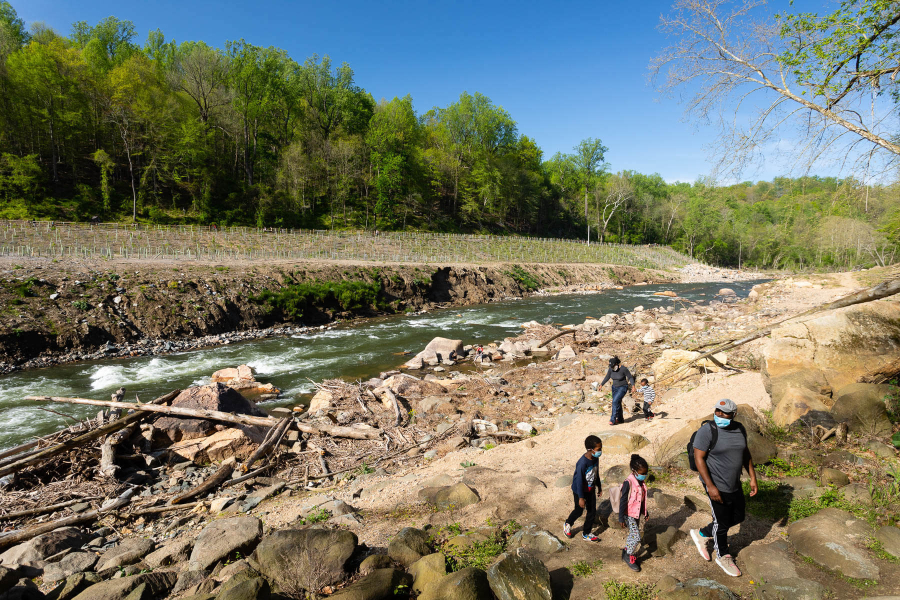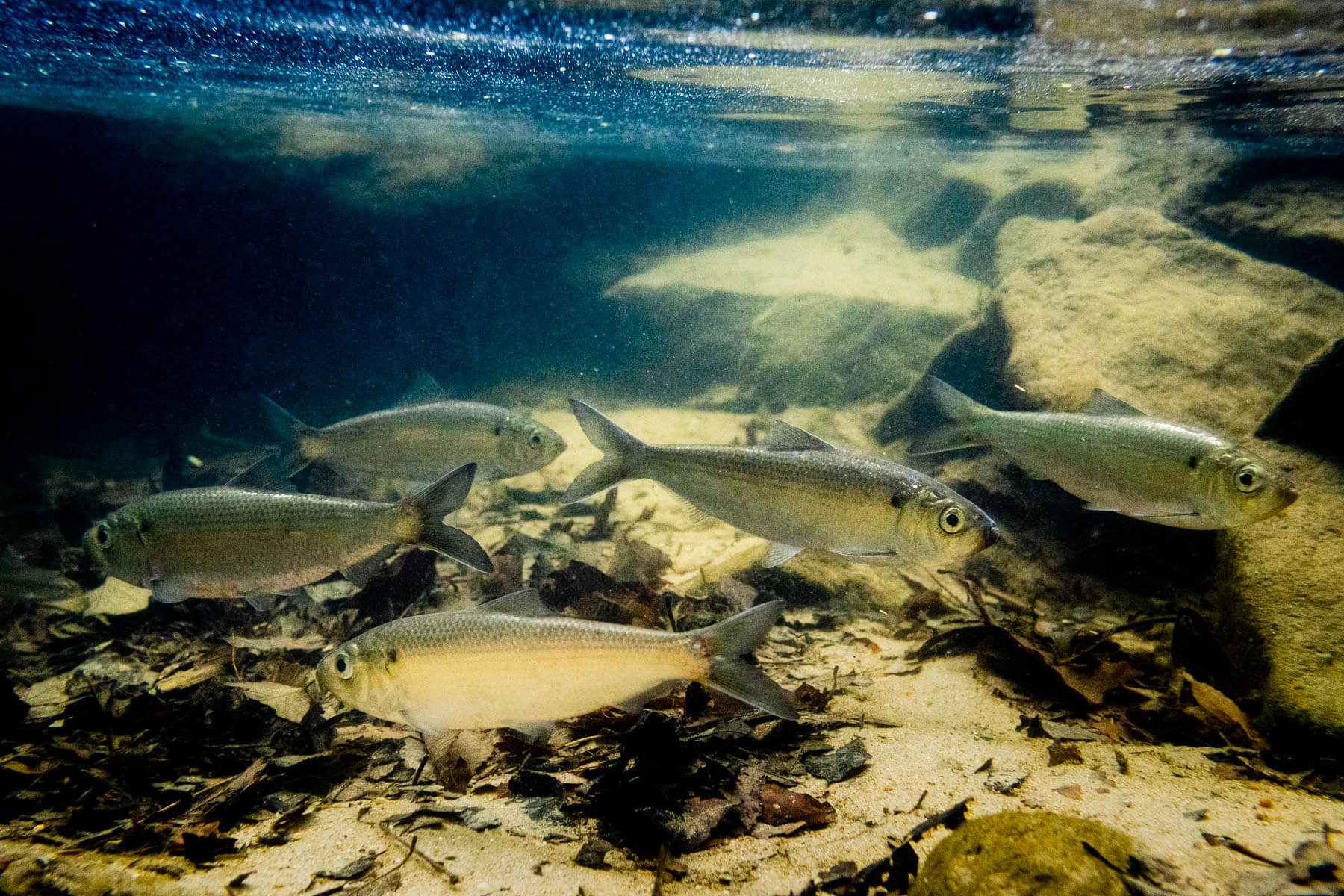With fewer dams, a river near Baltimore flows more freely
Fish are returning to the Patapsco just a year after the demolition of Bloede Dam

In 1907, workers finished building a state-of-the-art hydroelectric dam on the Patapsco River. Less than twenty years later, it was shut off for good. For the bulk of Bloede Dam’s 111-year lifespan it was little more than a deadly safety hazard for summertime visitors to Maryland’s Patapsco Valley State Park. It was also a roadblock to the return of large runs of spawning fish like shad, herring and American eel that the river once supported.
The planning for Bloede’s removal took over a decade, complicated by a sewer line running in parallel to the river. But in September of 2018, workers detonated an explosive charge that breached the dam, and the Patapsco River flowed freely past the site for the first time in over a century.
By the next summer, workers had completed demolition, rebuilt a popular trail nearby and planted hundreds of native trees and shrubs to stabilize the restored riverbank. Signage will commemorate both the cultural legacy of the dam as well as fish like the American shad that once supported huge fisheries in the region.
So what does the river look like now, and will the fish return to the roughly 500 miles of upstream habitat that have been reopened to them? Recent findings help us answer those questions.
Sediment that had built up behind the dam was expected to take years to flush through the rivers downstream and temporarily affect water conditions. But that process has basically completed, and already the river has cut through the sediment to return to its natural bedrock foundation. Jim Thompson, a fisheries biologist with the Maryland Department of Natural Resources (DNR) thinks that heavy rains may have helped speed up the process.
“It happened a lot quicker than we thought,” Thompson said.
In 2020, during the first full spring after construction finished, DNR biologists conducting electroshock surveys found white perch, quillback and gizzard shad miles upstream from the former Bloede site, below Daniels Dam. Last summer they found juvenile striped bass.
“None of those species had been observed in our surveys upstream of the dam pre-removal,” said DNR biologist William Harbold.
To see fish that far upstream in the first year after a major dam removal is “a good sign,” Thompson said.

With the dam gone, early signs show that two important species—collectively known as river herring—are also returning.
Alewife and blueback herring are an important food source for larger predators like striped bass and bluefish, and in the 1930s were the second largest fishery in the Chesapeake. But due to fishing pressure and limited habitat, their commercial value decreased steadily until a moratorium took hold in Maryland in 2011.
Since 2016, a team led by Matthew Ogburn of the Smithsonian Environmental Research Center (SERC), in collaboration with Louis Plough of the University of Maryland Center for Environmental Science’s Horn Point Laboratory has conducted e-DNA sampling to look for signs of river herring at sites all along the Patapsco River. Their research spanning the Chesapeake Bay watershed serves to document the current status of river herring spawning runs in order to support conservation and management efforts.
Until 2019, the SERC/Horn Point team had detected river herring at most sites below Bloede Dam, but never upstream from it. But just months after Bloede was removed, they detected river herring—both alewife and blueback herring—at several locations between Bloede and the base of Daniels Dam.
With Bloede gone, Daniels is the last remaining of four major dams on the Patapsco—Union Dam was removed in 2010, and Simkins Dam was removed in 2011.
Although Bloede had a fish ladder—as Daniels does—such structures are not as effective as dam removal in allowing fish passage. So with the impediment at Bloede gone, more fish have a chance to reach the barrier at Daniels and potentially make it past.
Bloede Dam was a landmark for visitors to Patapsco Valley State Park. Today, the forested trails leading to the site open up into the rocky expanse of the newly exposed historical riverbank. Where the part of the river behind the dam once stretched wide and flowed quietly, the Patapsco now roars past large boulders. Thompson said future visitors to the Bloede Dam site probably won’t realize that a dam used to be there.
Now that all the impediments to fish are gone, he hopes to see more fish this year. Already, Thompson considers the Bloede dam removal to be a success.
“It serves as a case to do more.”

Comments
I used to kayak up from Daniels and down from Woodstock (I was a Woodstock Native) depending on the river flow regularly. The sediment build up about a quarter mile up from the Dam is significant. I have seen some interesting fish up there, some perch varieties obviously can make it up the fish ladder, but there is no reason to keep the structure. One can kayak even when removed as you can put in from Woodstock Rd instead of Daniels. There is also a timber rattlesnake population along that part of river which is kinda unique.
This begs the obvious question. What is going on with the Daniel’s dam?
Thank you!
Your comment has been received. Before it can be published, the comment will be reviewed by our team to ensure it adheres with our rules of engagement.
Back to recent stories